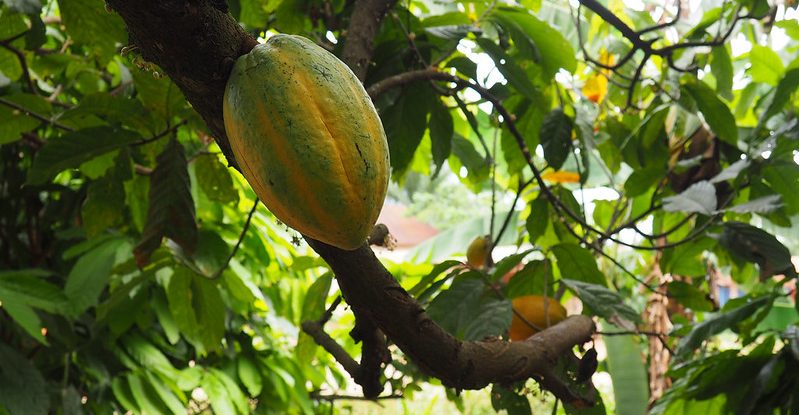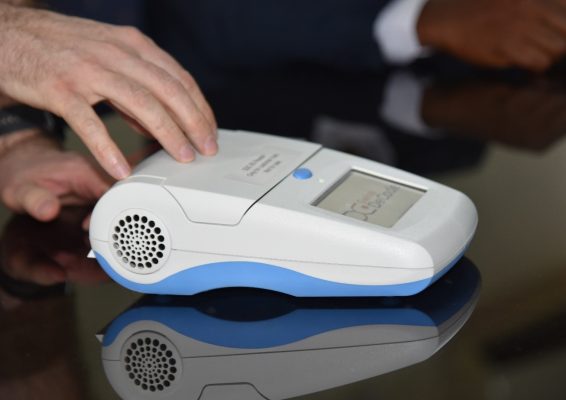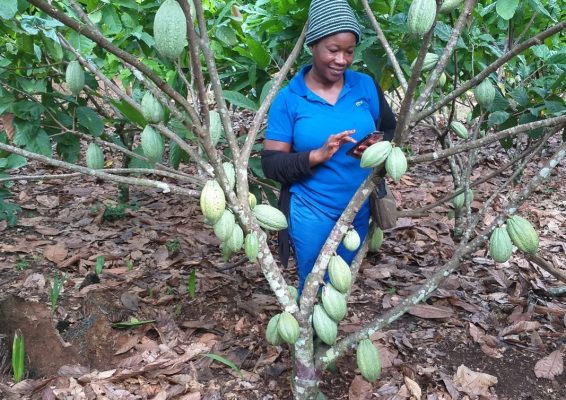
Cocoa Swollen Shoot Disease (CSSD), a viral infection spread by mealybugs, has reached endemic status in West Africa. Combined with the impacts of climate change and deforestation, CSSD presents an alarming threat to cocoa production – a crucial economic driver for many countries in the region. The disease has already inflicted substantial and irreversible economic damage on cocoa smallholders in areas of mass infection.
In this critical context, a new study by a team of researchers at Félix Houphouët Boigny University, the National Centre for Agronomic Research (CNRA), and the Center for International Forestry Research and World Agroforestry (CIFOR-ICRAF) was conducted to shed light on the profound consequences of CSSD for local cocoa farmers’ lives. By examining the socioeconomic characteristics of affected households and their agricultural practices, they gained valuable insights on the obstacles encountered by these farmers – and on potential strategies for mitigation.

A Côte d’Ivoire cocoa plantation shows serious dieback caused by swollen shoot disease. Photo by Koffie Kouakou/CIFOR-ICRAF
The team carried out interviews with 800 cocoa farmers, comparing households affected by the disease with similar households that were not affected.
They found that affected households had much less money to spend on things like their children’s education and healthcare. This financial strain perpetuated a cycle of limited resources and opportunities, which was exacerbated by challenges in accessing modern health services, thus compounding the socioeconomic impact of the disease.
The study also explored the factors influencing the probability of CSSD occurrence on cocoa farms. “Socioeconomic characteristics such as the age of the producer, education level, access to credit, and reliance on family labor were found to positively influence the likelihood of infection,” said Mahyao Adophe, a socioeconomist at CNRA. Meanwhile, “the possession of off-farm income, experience in cocoa production, contact with extension services, frequency of weeding operations, and the use of chemical fertilizers had a negative impact on infection rates,” he said.
The findings led to clear recommendations for alleviating the impact of CSSD on smallholder farmers. Reinforcing producer awareness and training on cocoa swollen shoot disease is essential, said the co-authors – by equipping farmers with knowledge on preventive measures, early detection tools, and appropriate disease management practices, the spread and impact of CSSD can be mitigated. Diversifying income sources is also crucial for cocoa-farming households, they said: relying on monocropping increases vulnerability to CSSD’s negative effects, while alternative income-generating activities can provide safety nets and improve resilience.
Research efforts to combat CSSD in the region have gained significant momentum in recent years, with ongoing work in various areas, such as disease characterization, developing resistant cocoa varieties, Integrated Pest and Disease Management (IPM) strategies, vector control, epidemiological studies, and early detection of CSSD on asymptomatic trees.
In Côte d’Ivoire, disease prevention research – led by ICRAF under the Vision for Change (V4C) project since 2012 – has culminated in the development of a cost-effective and field-usable rapid detection kit, which is more accurate than a laboratory test and provides results in less than 60 minutes. The technology is currently undergoing field pilots within farming environments. Developed in collaboration with Mars Incorporated, SwissDeCode, and CNRA, the kit provides farmers with an efficient means of promptly identifying infective plants before symptoms appear on the leaves.
CIFOR-ICRAF research scientist Koffie Kouakou, who is one of the co-authors of the study, emphasized the significance of this advancement. “The validation process of the CSSD diagnostic kit in the field has revealed its effectiveness in rapidly detecting the disease using asymptomatic cocoa leaf samples,” he said. “This pioneering technology will make a substantial contribution to enhancing the monitoring system of cocoa farms through extension services.”
Collective efforts like the above – between researchers, governments, farmers, and the cocoa industry – are essential to effectively combat CSSD in West Africa, said the study’s co-authors. They expressed confidence that, through ongoing multidisciplinary research and collaboration, innovative solutions will continue to emerge to protect cocoa production and the livelihoods of millions in the region.
We want you to share Forests News content, which is licensed under Creative Commons Attribution-NonCommercial-ShareAlike 4.0 International (CC BY-NC-SA 4.0). This means you are free to redistribute our material for non-commercial purposes. All we ask is that you give Forests News appropriate credit and link to the original Forests News content, indicate if changes were made, and distribute your contributions under the same Creative Commons license. You must notify Forests News if you repost, reprint or reuse our materials by contacting forestsnews@cifor-icraf.org.

